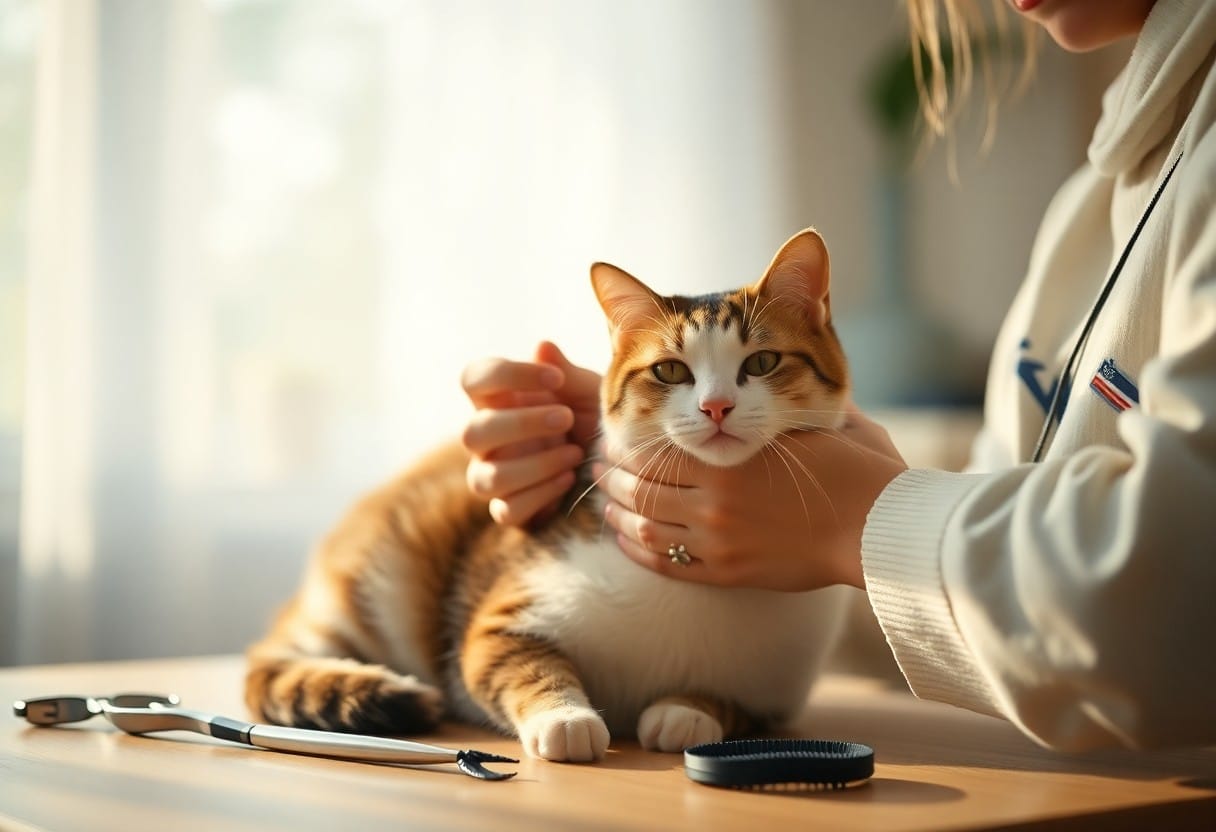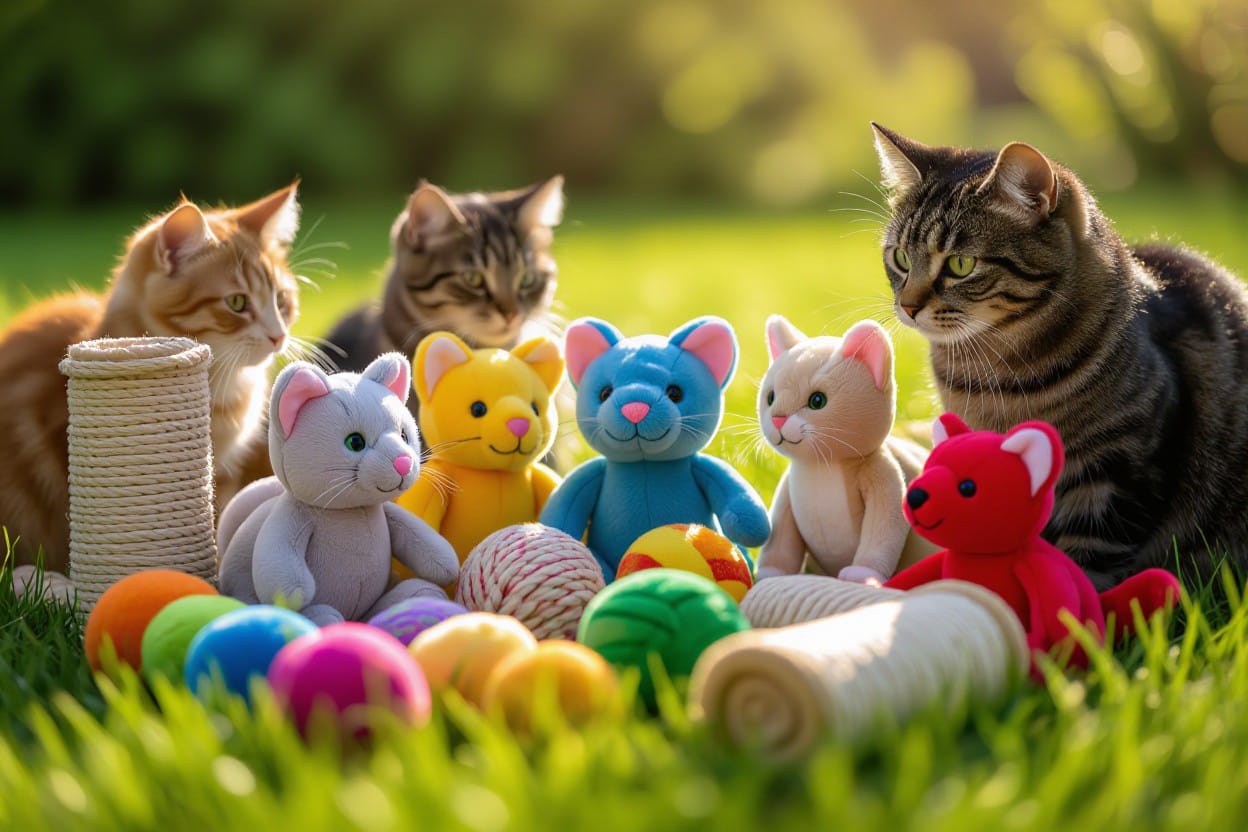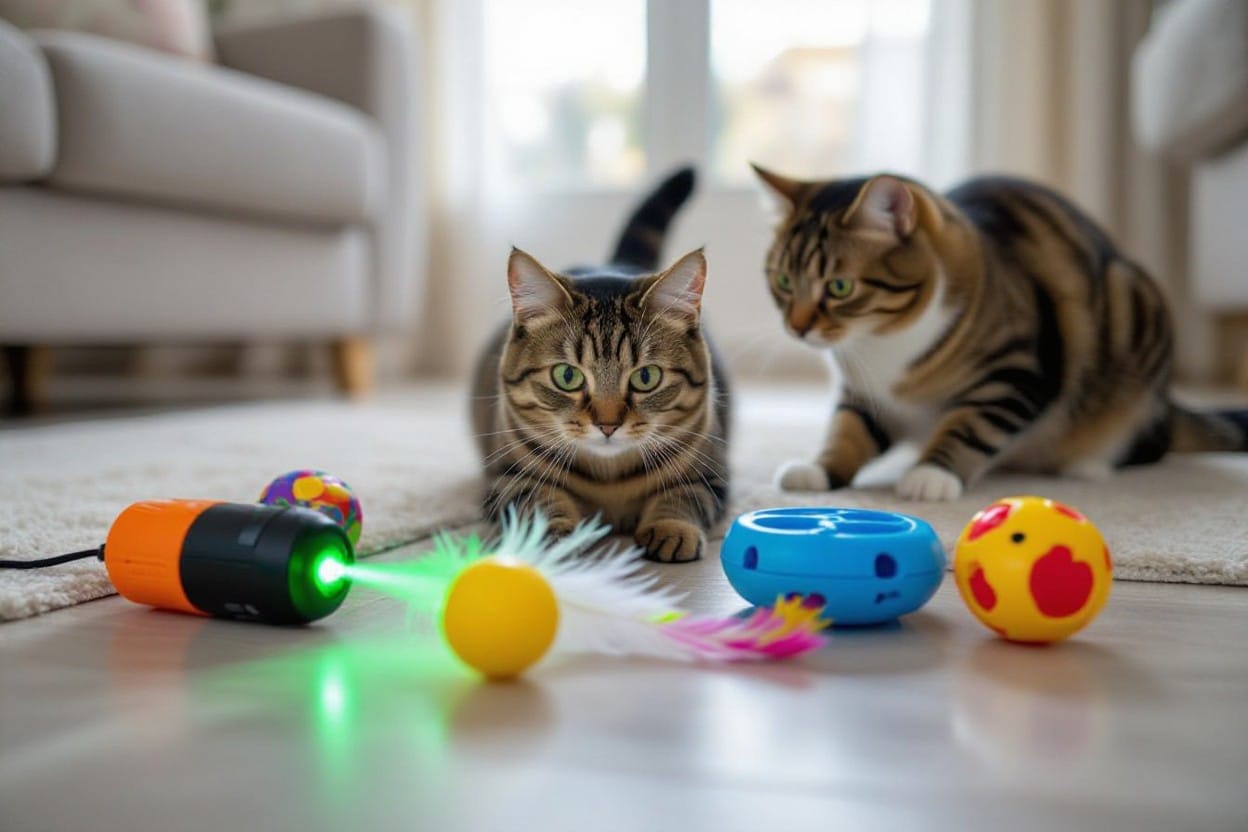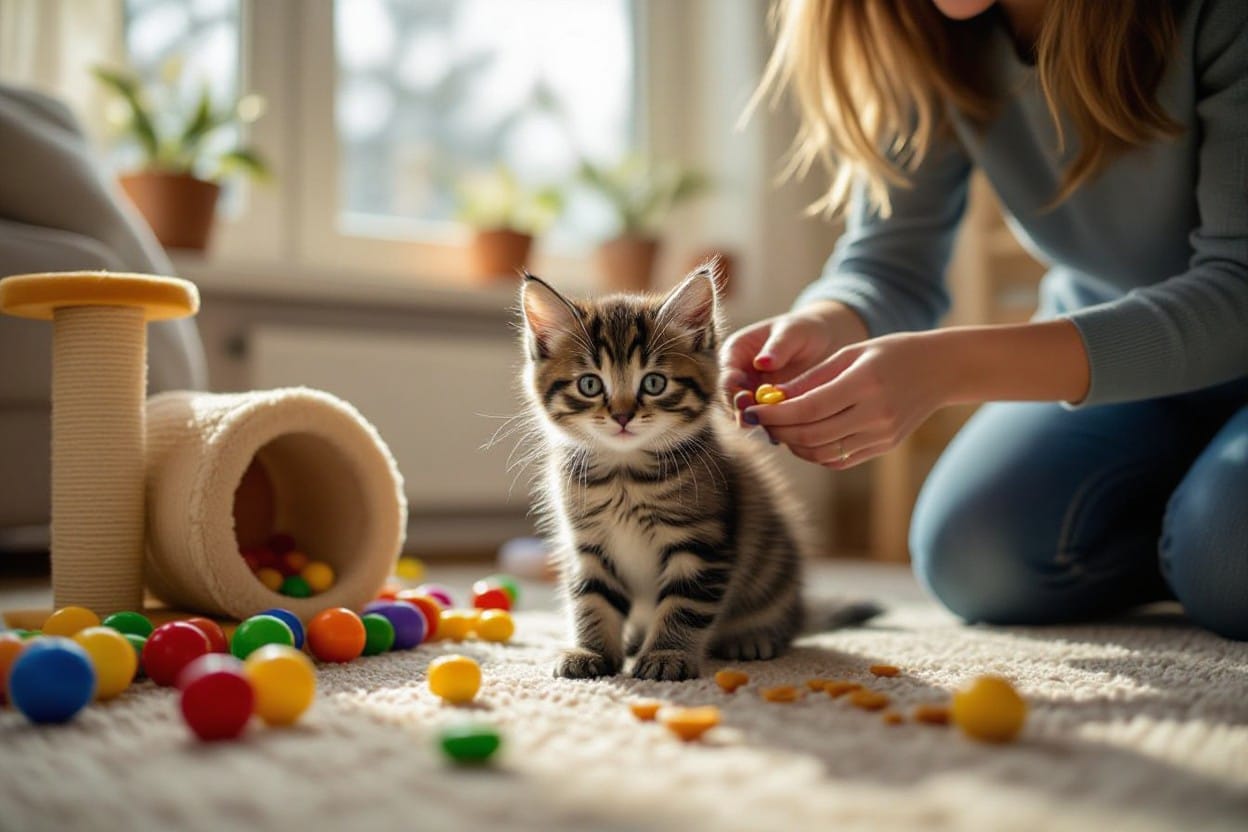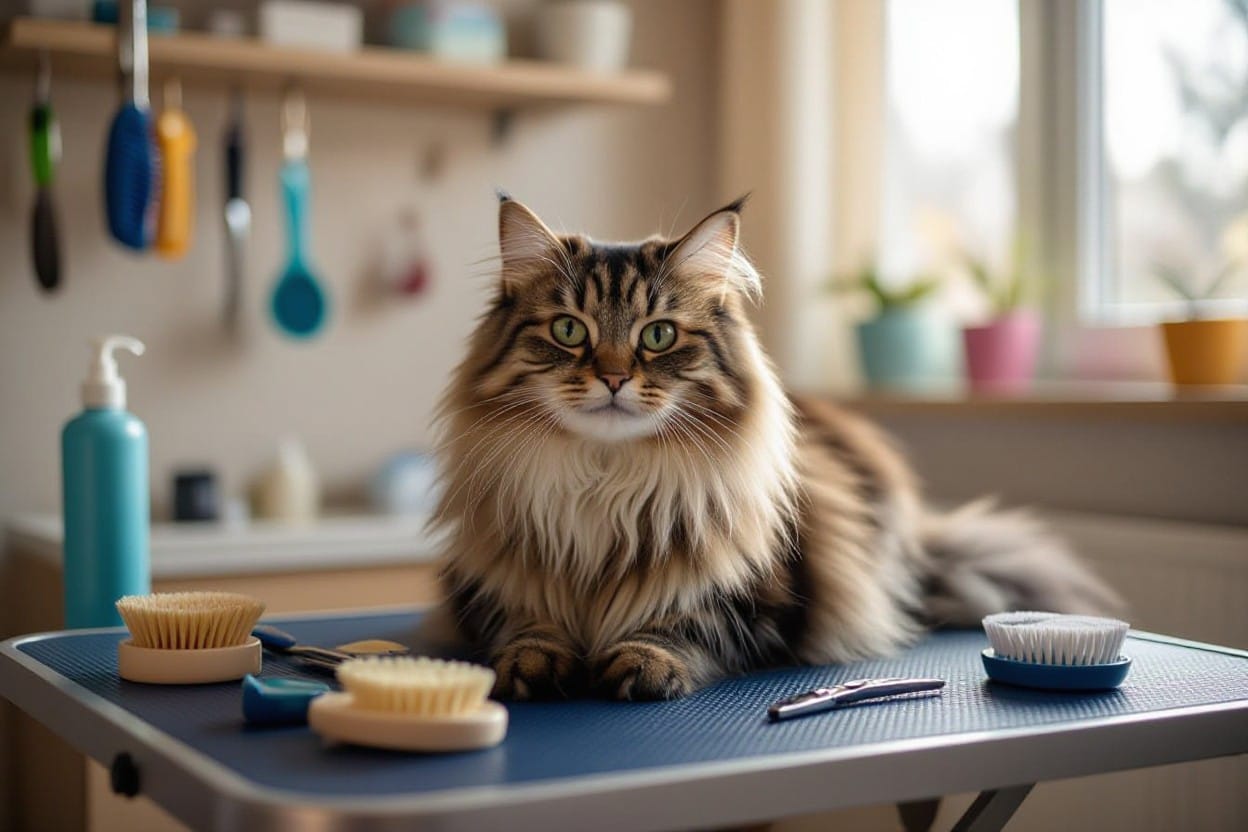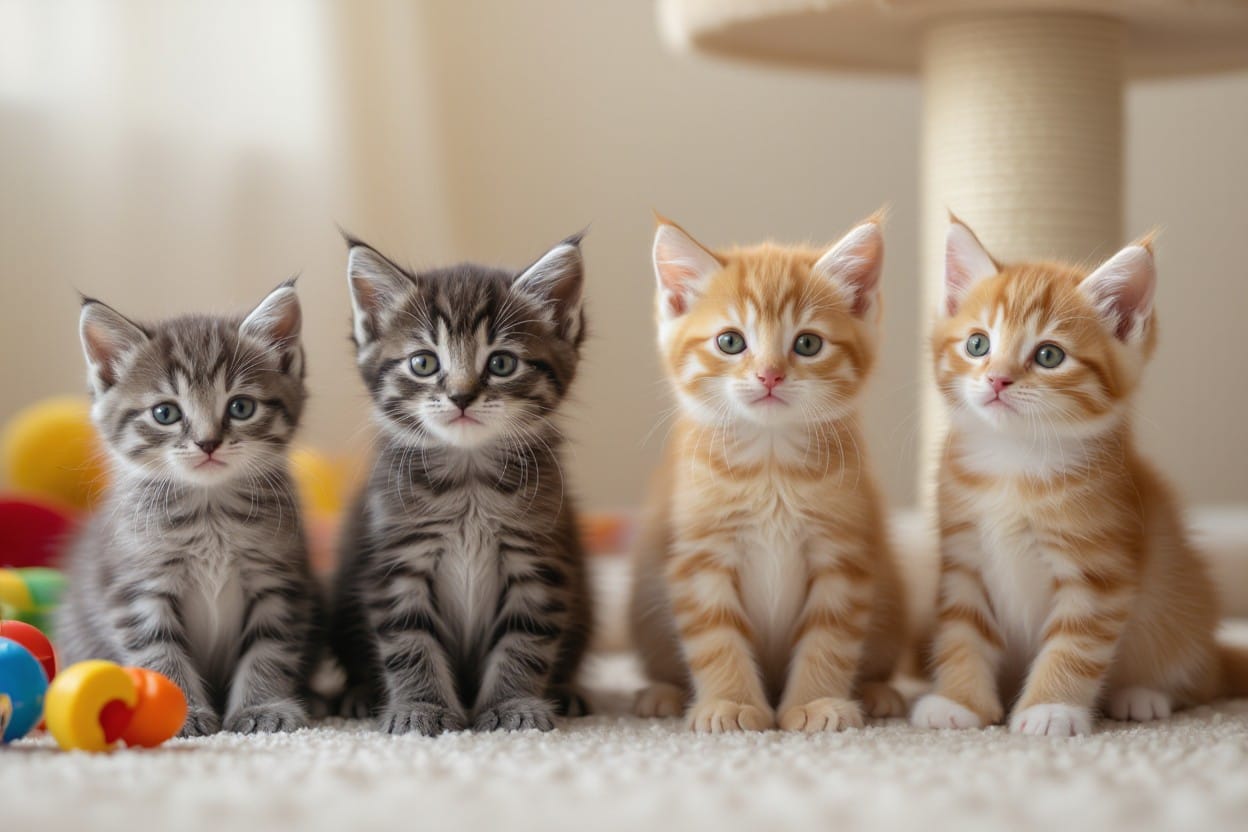This guide will empower you to transform your cat grooming routine into a stress-free experience for both you and your feline friend. By employing effective stress reduction techniques, you can ensure your cat remains calm during grooming sessions, leading to a healthier coat and a stronger bond between you. You’ll discover practical tips and methods designed to make grooming a positive experience, minimizing anxiety and maximizing comfort for your furry companion.
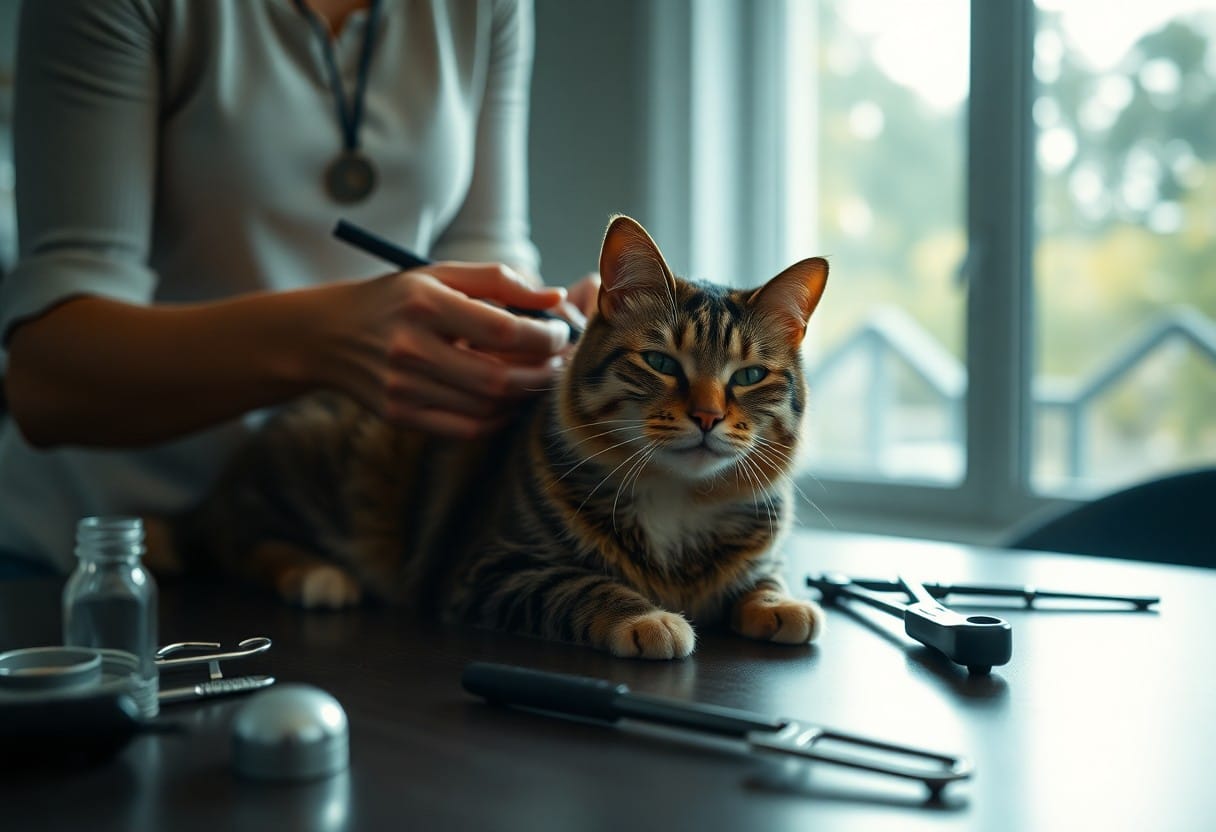
Key Takeaways:
- Establish a consistent grooming routine to create a sense of familiarity and comfort for your cat.
- Utilize gentle handling techniques and calming aids, such as treats or soft music, to reduce anxiety during grooming sessions.
- Be patient and attentive to your cat’s body language, making adjustments as necessary to ensure a positive experience.
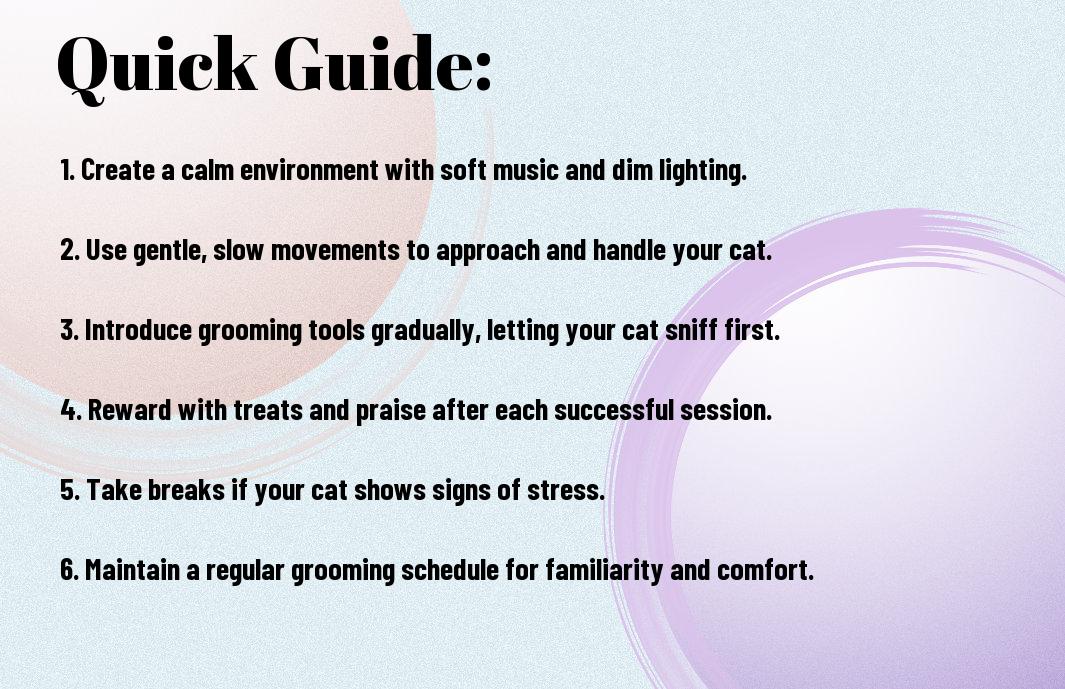
Types of Cat Grooming
While grooming your cat is crucial for their overall health and well-being, understanding the different types of cat grooming can enhance the experience for both you and your feline companion. Here are the primary grooming types:
| Brushing | Removes loose hair and prevents matting |
| Bathing | Helps maintain clean fur and skin |
| Nail Clipping | Prevents overgrowth and associated health issues |
| Ear Cleaning | Prevents infections and maintains hygiene |
| Dental Care | Supports oral health and fights bad breath |
Recognizing the importance of these grooming types can make the process smoother and more enjoyable for you and your cat.
Brushing Techniques
There’s a variety of brushing techniques you can employ based on your cat’s coat type. Use a slicker brush for long-haired cats to eliminate tangles, while a bristle brush is ideal for short-haired breeds. Frequent brushing not only reduces shedding but also serves as a bonding opportunity between you and your pet.
Bathing Methods
Types of bathing methods vary significantly depending on your cat’s comfort and needs. You can choose between a traditional bath in a tub, a portable shower, or even a damp cloth method for quick clean-ups. It’s crucial to use cat-safe shampoo to prevent skin irritation and always ensure your feline is calm throughout the process.
A gentle approach combined with a positive atmosphere can make bathing less stressful for your cat. Start with a low-pressure spray, and ensure the water is warm—not hot or cold. Always ensure you rinse thoroughly to prevent any shampoo residue from causing irritation. Consider keeping treats on hand to reward your cat during and after the bath.
Nail Clipping Options
One of the most critical grooming tasks is nail clipping. Using a specialized cat nail clipper or a multi-use guillotine clipper can help you keep your cat’s nails at a healthy length. Pay attention to the quick, the pink part of the nail that contains blood vessels and nerves, to avoid causing pain.
Grooming your cat’s nails regularly can prevent injuries not just to your furniture but to your cat as well. For best results, utilize a calm environment, keep some treats handy, and consider using a nail grinder as an alternative for a quieter trimming option. This can make the experience much more pleasant for your cat and reduce the risk of accidental injury.
Tips for Effective Grooming
There’s no need for grooming sessions to be stressful either for you or your cat. Implementing a few simple tips can ensure more effective grooming outcomes:
- Establish a regular grooming schedule.
- Use positive reinforcement with treats.
- Keep grooming sessions short and engaging.
- Be patient and attentive to your cat’s reactions.
Thou will notice these practices lead to a more enjoyable experience for both you and your furry friend.
Creating a Calm Environment
Now is the time to focus on setting the right mood for grooming. Dim the lights, play soft music, and ensure your cat is in a comfortable space free from distractions. A familiar spot with soothing scents can also have a positive impact on your cat’s stress levels, making it easier for you both to focus on the grooming task.
Choosing the Right Tools
Calm and effective grooming begins with the right tools at your disposal. Invest in a good quality brush or comb that suits your cat’s coat type to avoid unnecessary discomfort. Specialized tools, such as grooming gloves, can also make the process enjoyable and facilitate bonding between you and your pet.
Tips for selecting grooming tools include identifying the specific needs of your cat’s coat type. Different breeds have varying needs; for example, longer-haired cats may require slicker brushes to prevent matting, while shorter-haired breeds might benefit from a rubber brush for a gentle massage. Prioritize ergonomic designs for your comfort, as well as quality and durability to ensure safety during grooming sessions.
Recognizing Cat Comfort Levels
One of the keys to successful grooming is recognizing your cat’s comfort level. Pay close attention to their body language—flattened ears, a twitching tail, or growling may signal distress. Take note of their signs and adjust your techniques or take breaks as needed to keep your grooming sessions comfortable.
Grooming becomes a rewarding experience when you understand your cat’s comfort levels. If your cat shows signs of stress, such as attempting to escape or vocalizing loudly, these signals indicate you need to slow down or pause the grooming. Foster a trusting relationship by moving at their pace and gradually increasing grooming frequency, which can reduce anxiety and make each session smoother over time.
Step-by-Step Grooming Process
Many cat owners may find the grooming process overwhelming, but breaking it down into simple steps can make it manageable and enjoyable for both you and your feline friend.
| Step | Description |
| 1. Gather Supplies | Collect all necessary grooming tools like brushes, combs, and nail clippers. |
| 2. Create a Comfortable Environment | Find a quiet and safe space where your cat feels relaxed. |
| 3. Start with a Brush | Begin brushing your cat gently to remove loose fur and debris. |
| 4. Nail Trimming | Carefully trim your cat’s nails using appropriate clippers. |
| 5. Monitor for Stress | Watch for signs of stress and take breaks if needed. |
Preparing Your Cat
For a successful grooming session, ensure your cat is comfortable and calm. Take some time to play and interact with your pet before starting, as this will help create a positive environment. Choose a quiet space and consider using soothing music or pheromone sprays. These small yet significant preparations can make a noticeable difference in your cat’s stress levels.
Grooming Techniques for Different Fur Types
An understanding of your cat’s fur type is key to effective grooming. Different fur types require different techniques to maintain a healthy coat. Here’s a breakdown:
| Fur Type | Grooming Technique |
| Short Hair | Brush weekly with a fine bristle brush. |
| Medium Hair | Use a comb and a slicker brush twice a week. |
| Long Hair | Daily brushing is necessary; use a wide-tooth comb. |
| Curly | Use special grooming tools to avoid matting. |
| Sensitive Skin | Use gentle grooming tools and techniques. |
- Understand your cat’s fur type for effective grooming.
- Use appropriate tools based on fur length and type.
- Grooming helps prevent mats and tangles.
- Gentle grooming techniques protect sensitive skin.
- Assume that the right approach can enhance your cat’s comfort.
Plus, be aware that each cat has its own personality and comfort level. Adjust your approach according to your cat’s response during grooming. It’s imperative to use the right tools that suit your cat’s specific fur type to avoid causing stress or discomfort.
| Fur Type | Recommended Tools |
| Short Hair | Fine bristle brush |
| Medium Hair | Slicker brush and comb |
| Long Hair | Wide-tooth comb and slicker brush |
| Curly | Poodle comb or detangling brush |
| Sensitive Skin | Soft-bristle brush |
- Employ the right tools based on your cat’s fur type.
- Avoid pulling on mats or tangles; patience is key.
- Maintain a gentle touch to help your cat relax.
- Grooming sessions should be short and positive.
- Assume that regular grooming can significantly enhance coat health.
Post-Grooming Care
With the grooming complete, it’s imperative to provide your cat with a calming aftercare routine. Give them some time to relax, and offer them their favorite treat for a positive association. Ensure they have access to fresh water and a cozy spot to unwind after their grooming session.
Grooming is an important aspect of maintaining your cat’s health and happiness. Provide extra love and attention post-grooming to reassure them. After a grooming session, monitor your cat for any signs of discomfort and give them space to adjust. Always use this time to bond, as positive experiences can transform grooming from a task into an enjoyable routine for both you and your feline friend.

Factors That Affect Grooming
Keep in mind that various factors can significantly influence your cat grooming experience. Consider the following:
- Cat breed
- Age
- Health status
- Seasonal changes
Knowing these factors can help tailor a grooming routine that is both effective and less stressful for your feline friend.
Cat Breed Considerations
Some breeds require different grooming techniques and frequencies due to varying coat types. For example, long-haired breeds like Persians and Maine Coons need extensive grooming to prevent matting, while short-haired breeds may require less. Understanding your cat’s specific grooming needs based on their breed will make the process smoother for both you and your cat.
Age and Health Factors
If your cat is elderly or has health issues, it may be more difficult for them to tolerate grooming sessions. Factors to consider include:
- Mobility issues
- Skin sensitivities
- Medical conditions
- Behavioral changes
Recognizing these indicators can help you adjust your grooming routine to cater to your cat’s specific needs.
Grooming can become increasingly challenging as your cat ages or if they have existing health issues. Pay attention to behaviors that may indicate discomfort, such as resisting grooming or showing signs of stress. Additionally, discuss with your veterinarian any specific health concerns that might impact grooming. Knowing your cat’s condition will enable you to adopt a gentler approach and avoid exacerbating any issues.
Seasonal Influences
Affect your cat’s grooming needs, especially with changes in temperature and humidity. During shedding seasons, you may notice more hairballs and loose fur around your home.
Plus, seasonal shifts can also have a profound impact on your cat’s coat health; for example, in the spring, they may shed their winter coat, leading to increased grooming requirements. Be proactive in brushing your cat regularly to reduce shedding and keep their coat healthy. Ignoring these changes can lead to matting and uncomfortable fur conditions for your cat, emphasizing the importance of adapting your grooming routine with the seasons.
Not Just a Walk in the Park: Pros and Cons of Home Grooming
Not everyone finds home grooming to be beneficial. Here’s a breakdown of the pros and cons to help you decide if it’s the right choice for you and your furry friend.
| Pros | Cons |
|---|---|
| Cost-effective | Time-consuming |
| Promotes bonding | Requires specific tools |
| Controls shedding | Potential for injury |
| Personalized care | Some cats may resist |
| Convenience | Learning curve involved |
Benefits of Regular Grooming
Grooming your cat regularly can significantly enhance both their physical and emotional well-being. It helps to reduce shedding and matting, promotes a healthy coat, and allows you to keep an eye out for any skin issues. Additionally, regular grooming creates a strong bond between you and your cat, facilitating comfort and trust.
Challenges and Drawbacks
Cons of home grooming can pose challenges that may complicate the process for you and your cat. The risk of injury during grooming can be significant, especially if your cat is particularly skittish. Your cat may also resist the grooming process, leading to stress for both of you. Moreover, the tools you need can be an investment, and if you’re unfamiliar with the grooming techniques, it can require some time to learn. This learning curve can be frustrating but is crucial for ensuring your cat’s safety and maintaining an optimal grooming routine.
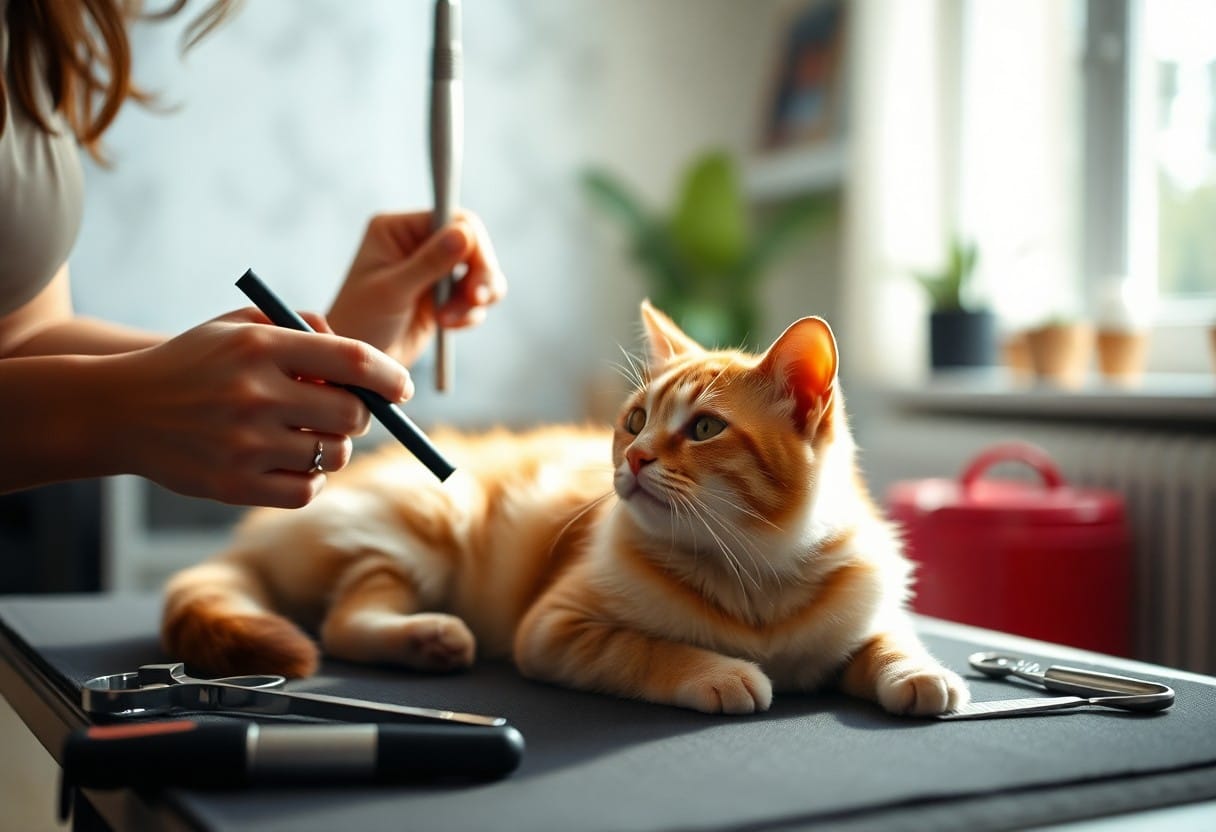
Stress Reduction Techniques
For many cats, grooming can be a stressful experience, but utilizing effective stress reduction techniques can transform it into a much more positive one. By implementing methods that promote relaxation, you can make grooming sessions less intimidating and more enjoyable for your furry friend. From creating a calm environment to using suitable calming aids, you can help your cat feel comfortable and secure during grooming.
Creating a Positive Experience
Creating a positive grooming experience starts with establishing a calm environment. Choose a quiet space free from distractions and ensure your cat feels safe. Use a soft voice and gentle touch throughout the grooming process, rewarding your cat with treats or affection after each session. This builds a sense of trust and makes grooming a more desirable routine.
Using Calming Aids
One effective approach to reducing your cat’s grooming-related anxiety is to incorporate calming aids into your routine. These products can range from pheromone diffusers to herbal supplements, specifically designed to soothe your pet. Look for options that have natural ingredients and are vet-approved, ensuring their safety and efficacy.
Reduction of anxiety during grooming sessions can be greatly enhanced by using calming aids. Many cats respond well to pheromone diffusers, which emit soothing messages that help alleviate stress. Additionally, consider trying calming treats or sprays before grooming to create a more relaxed state. Some cats may benefit from herbal supplements formulated to promote tranquility. Always consult your veterinarian before introducing new products to ensure they are safe for your cat. Finding the right aid can significantly improve your cat’s grooming experience, making it a more pleasant routine for both of you.
Conclusion
The Ultimate Guide To Home Cat Grooming – Stress Reduction Techniques provides you with practical strategies to transform grooming into a positive experience for both you and your cat. By incorporating gentle techniques, creating a calm environment, and using the right tools, you can significantly reduce stress for your feline friend. Regular grooming will not only enhance your cat’s appearance but also strengthen your bond. Embrace these methods, and you’ll find that home grooming becomes an enjoyable routine that promotes overall well-being for your beloved pet.
Q: What are some effective stress reduction techniques for cats during grooming sessions?
A: To help reduce stress in cats during grooming, consider implementing the following techniques:
1. Create a calm environment by choosing a quiet space free of distractions. This helps your cat feel more secure.
2. Use gentle voices and soothing music to keep the atmosphere relaxed.
3. Introduce grooming tools gradually, allowing your cat to sniff and explore them before using them.
4. Offer treats or positive reinforcement throughout the grooming process to associate grooming with good experiences.
5. Take breaks as needed to prevent overwhelming your cat, especially if they show signs of anxiety, such as hiding or hissing.
Q: How can I gradually introduce grooming to my cat?
A: Gradually introducing grooming is imperative for a positive experience. Start by desensitizing your cat to grooming tools. Begin by allowing your cat to explore the brush or comb without using it. Once they are comfortable, stroke them gently with the brush for a few seconds, then reward them with a treat. Gradually increase the duration and area you groom, ensuring that each session is short and positive. If your cat shows signs of discomfort, take a step back and adjust your approach.
Q: What equipment is recommended for home cat grooming?
A: Investing in the right grooming equipment can make the process easier and more enjoyable for both you and your cat. Key items include:
1. A high-quality cat brush – Depending on your cat’s coat type, choose a brush that is suitable for their fur, such as a slicker brush for long-haired cats or a bristle brush for short-haired breeds.
2. Nail clippers – Look for cat-specific clippers or guillotine-style clippers, and ensure they are sharp to avoid discomfort.
3. A grooming glove – These can help to remove loose hairs while giving a soothing massage, making the experience pleasant for your cat.
4. Cat-safe wipes or shampoo – For regular cleaning and if your cat despises water, these can help you keep their coat clean between full baths. Always ensure that products are specifically designed for cats to avoid harmful ingredients.
